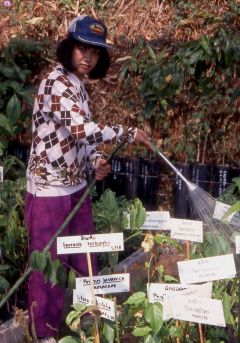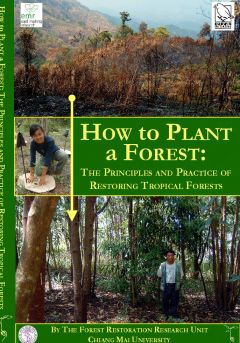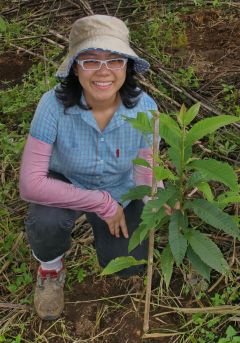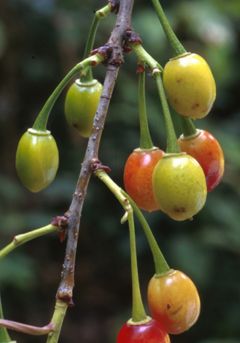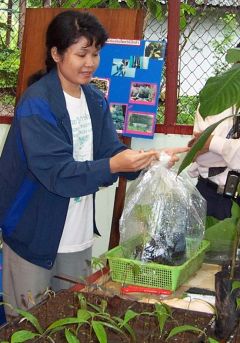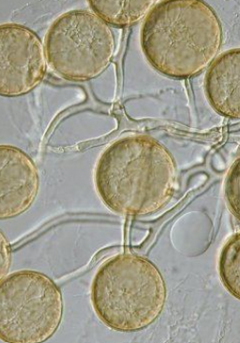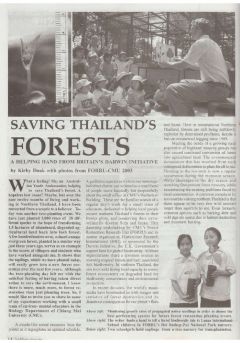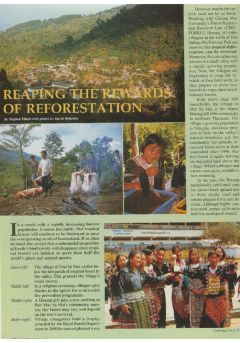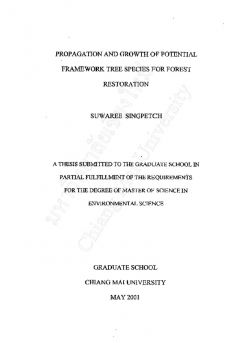FORRU-CMU contributed to a project organized by Thailand's Supreme Command and the IUCN to restore forest on 1,440 ha of degraded land on Doi Mae Salong (DMSL), Chiang Rai Province. The project was adopted by IUCN’s 'Livelihoods and Landscapes' Initiative, with tree-planting sponsored by Plant a Tree Today (PATT) Foundation. The restoration sites were exhausted former agricultural areas, on steep slopes, at risk of soil erosion and landslides.
The objectives were
- to transform degraded areas into forest to honour the Royal Family and
- to prevent soil erosion.
FORRU-CMU provided technical and scientific assistance to the project (2007-10) Sixty village leaders, local authority officers, school teachers and forestry officers attended 3 workshops, run by FORRU-CMU staff in Chiang Mai, on the general concepts and skills needed for forest restoration.
Subsequently, IUCN organized construction of tree nurseries at 8 village schools in the project area. FORRU-CMU provided training in tree nursery techniques on-site at the 8 school tree nurseries during 2009. The FORRU-CMU team ran a series of educational and training events at the schools, covering seed germination, potting trees, care of trees in the nursery, as well as tree planting and aftercare.
Seed collection was identified as requiring special attention. To address this, FORRU-CMU organized a “forest children” (“look mai pah”) club program. Children got involved in labelling target seed trees —"treasure trees"—, collecting seeds from them and also helping to germinate them. Participating children became members of the club, and accumulated points on a membership card, in exchange for rewards.
In addition, an experimental plot was established to test the suitability of the framework species method of forest restoration (FORRU, 2006) near Ban Lo Yo, in collaboration with the village committee. FORRU-CMU carried out monitoring of this plot over the year and a technical report, presenting initial results on performance of the planted trees, was submitted to IUCN in December 2009.
21: Producing Framework Tree Species for Restoring Forest Ecosystems in Northern Thailand
Abstract: Since 1994, the Forest Restoration Research Unit of Chiang Mai University’s Biology Department (FORRU-CMU) has been developing methods to restore forest ecosystems to deforested sites...
22: How to Plant a Forest: The Principles and Practice of Restoring Tropical Forests
FORRU-CMU's second practical training manual was published in 2005. It includes generic principles of restoration theory and practice, applicable throughout the tropics, as well as descriptions...
23: Seed Dispersal and Germination of 2 Native Tree Species: Gmelina arborea (Roxb.) and Terminalia chebula Retz. var. chebula.
ABSTRACT: Forest restoration, using native forest trees (the so called “framework tree species”), requires detailed knowledge of the dispersal ecology of such trees. This project was conducted in...
24: Selection of Prunus cerasoides D. Don seed trees for forest restoration
ABSTRACT: Prunus cerasoides D. Don has been identified as a ‘framework species’ for restoring evergreen forest in seasonally dry climates. The aim of this study was to develop criteria to select...
25: Selecting seed trees for a forest restoration program: a case study using Spondias axillaris Roxb. (Anacardiaceae)
Spondias axillaris Roxb. (Anacardiaceae) (synonym: Choerospondias axillaris (Roxb.) Burtt and Hill) is an exceptionally effective framework tree species for restoring seasonal tropical forest...
26: Propagation of Native Forest Tree Species for Forest Restoration in Doi Suthep-Pui National Park
ABSTRACT: Restoring forest ecosystems by tree planting requires production of high quality planting stock, on a large scale, of a very wide range of indigenous forest tree species. Many of...
27: Effects of Pre-sowing Seed Treatments and Mycorrhizae on Germination and Seedling Growth of Native Tree Species for Forest Restoration
ABSTRACT: Forests in Thailand have declined over the past 30 years, due to illegal logging and agricultural expansion. Deforestation causes depletion of soil fertility, soil erosion, flooding in...
28: Saving Thailand's Forest: a helping hand from Britain's Darwin Initiative
Kirby Doak was the second of several skilled and enthusiastic Australian Youth Ambassadors, who uplifted FORRU-CMU's education and outreach program, from 2001 to 2010. In this article in Chiang...
29: Reaping the rewards of reforestation
Although rapidly growing human populations make continued tropical destruction and the accompanying loss of biodiversity seem inevitable, Hmong hill-tribe villagers in the north of Doi Suthep-Pui...
30: Propagation and Growth of Potential Framework Tree Species for Forest Restoration
ABSTRACT: One of the current major problems in Thailand is deforestation. Deforestation causes depletion of soil, land, water and biological resources (especially loss of biodiversity). Restoring...

